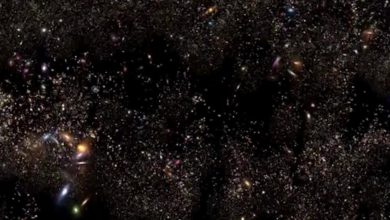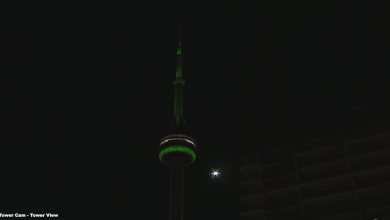Boeing’s Starliner Reaches Space Station Some 2 Years After Planned Visit

A couple of years later than had been hoped, Boeing’s Starliner space taxi arrived at the International Space Station on Friday evening.
There were no astronauts inside for this trip, but it marked a crucial milestone that eluded Boeing during a troubled flight test in 2019, when the same uncrewed spacecraft failed to reach the orbiting outpost. The company spent two and a half years fixing a series of technical problems before getting Starliner back to the launchpad, falling behind SpaceX, which has since carried five crews to the space station for NASA.
The spacecraft is expected to spend four or five days at the space station before returning to Earth, parachuting to one of five landing sites in the western United States.
A successful conclusion to the mission could provide NASA sufficient confidence to put astronauts on board for the next Starliner flight, which could occur by the end of the year.
Boeing is one of two companies that NASA has hired to take astronauts to and from the I.S.S. The contracts were issued in 2014, three years after NASA retired the space shuttles. The agency then had to rely on Russia to transport astronauts for nearly a decade. While SpaceX, founded by Elon Musk, is currently carrying crews to orbit, a second transportation option for NASA offers redundancy in case either spacecraft suffers an accident, and it prevents further reliance on Russia, which has become politically complicated since it invaded Ukraine earlier this year.
A day after it launched from Florida, the nose of the Starliner latched onto one of the docking ports at the space station at 8:28 p.m. Eastern time. Its hatch will be opened on Saturday, allowing the astronauts on the space station to start unloading 800 pounds of cargo, mostly food and supplies.
The launch, orbital approach and docking encountered some glitches but not major problems. After Starliner separated from the second stage of the Atlas 5 rocket that carried it to space, when two of the spacecraft’s thrusters failed during a firing to put it in a stable orbit. Other thrusters kicked in automatically to compensate. On subsequent firings, the propulsion system worked without problem, and Boeing said in a statement that the problem would not pose a risk for the rest of the flight.
Boeing also reported a problem with the cooling of the spacecraft, although it added that temperatures on the spacecraft remained stable. Other key systems, including navigation, power and communications, worked well, the company’s statement said.
During the journey to the space station, the spacecraft performed a number of maneuvers while closing in on the space station.
During its final approach, which lasted several hours, the spacecraft slowly and methodically moved along a carefully choreographed path. It paused several times and temporarily backed away — a series of demonstrations of systems designed to prevent the possibility of an out-of-control spacecraft colliding with the space station.
It waited at a distance of 32 feet in front of the space station for an hour because of a last-minute glitch with the docking system. Once troubleshooting of the problem was completed, a final nudge by the thrusters pushed it into contact with the docking port.
Following a successful return from orbit and landing, Boeing will still have additional work, including the certification of the spacecraft’s parachutes, before NASA approves Starliner for carrying astronauts. An independent safety board overseeing NASA expressed concern last week that Boeing did not have enough people working on the program.
“The panel will be monitoring the situation in the near future to see what impact, if any, this could have on the existence or mitigation of any safety risks,” said David B. West, a member of the safety board.
After a crewed demonstration mission taking two of three NASA astronauts to the space station, Starliner would begin regular operations, taking crews of four to orbit. NASA anticipates that SpaceX and Boeing will each fly one crew mission a year.
However, Boeing will not be able to tap into any non-NASA business as SpaceX has, launching two missions of private citizens to orbit in the past year. For one, Boeing’s vehicle is considerably more expensive. In 2019, the NASA inspector general estimated that NASA is paying $90 million for each Starliner seat while a seat on SpaceX’s Crew Dragon costs $55 million.
In addition, Boeing does not have access to the rockets needed to fly Starliner missions beyond what NASA requires. Currently, the spacecraft launches on top of an Atlas 5 rocket built by United Launch Alliance. But the Atlas 5 is propelled by Russian-built RD-180 engines. In 2016, Congress decided to require that RD-180s be phased out. Boeing has enough Atlas 5 rockets to fulfill its obligations to NASA — the crewed test flight and six operational flights — but no more.
Starliner can fly on other rockets, including Vulcan, the successor to the Atlas 5. But the Vulcan, which has yet to make its first flight, has not been approved for crewed missions.
Boeing officials, however, have said they anticipate Starliner will find wider use in the future, including with a private space station called Orbital Reef, which the company is building with two other companies, Sierra Space and Blue Origin, the rocket company founded by Jeff Bezos of Amazon.





